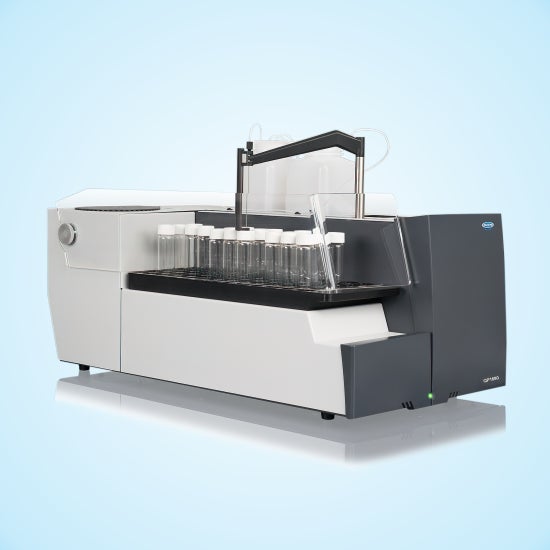Analysis Of Waste-Gas / Off-Gas Oxygen and Hydrogen in Nuclear Power Plants
Rugged Hach Orbisphere 511 analyzer combines O2 and H2 online measurements to detect explosive conditions and reduce unscheduled outages
Introduction
All nuclear power stations must be equipped with waste-gas / off-gas systems to handle gaseous wastes in compliance with regulatory requirements. The gaseous waste originates primarily from different gases dissolved in the coolant, radiolytic decomposition of water into hydrogen (H2) and oxygen (O2), and gases added to the process, such as hydrogen and nitrogen (NS2).
Designs of waste-gas / off-gas systems often differ considerably from plant-to-plant; however, there are some features that remain common to all systems. In pressurized water reactor (PWR) systems, gas volumes are rather small because the primary system is sealed. Gases in PWR systems are typically compressed and stored in decay tanks for 30–45 days before being released into the environment in a controlled manner. In the case of boiling water reactor (BWR) systems, the volume of released gas is much larger because the feed water is continuously deaerated. The gas produced at the deaerator must be treated as radioactive due to the fact that it has come in direct contact with fuel. BWR gases are held for a short time (often around 30 minutes), then diluted with air and released into the atmosphere.

Some systems are using recombiners to bond oxygen with hydrogen waste-gas by sending the gas through a catalytic reactor. The result of the bonds formed is water, which significantly reduces the amount of gaseous waste needing further treatment. A controlled amount of O2 may be added to react with the H2 to achieve the stoichiometric H2/O2 ratio. Another important benefit is reduction of risk to maintain hydrogen concentrations below the explosive mixture limit of 4%.
Benefits of the Hach Solution
It is critically important to keep tight process controls in place in this environment. For essential analysis parameters, the Hach® Orbisphere in-line waste-gas / off-gas analyzer offers distinct advantages over conventional methods and processes.
First, since waste-gas / off-gas instrumentation is used to detect and correct conditions that may propagate a H2/O2 explosion, reliability is crucial. With conventional H2/O2 analysis equipment, slight changes in temperature, pressure, and flow, as well as the presence of moisture in the process stream, can significantly affect the output signals. Additionally, start-up time, routine maintenance, and multiple point calibrations all demand many hours that operators often cannot dedicate during critical operating periods. Conventional equipment can become fouled by water and unreliable over time, making regulatory compliance an issue; additionally, jeopardizing “tech spec” measurements can result in LCO (limited control operation) conditions, unscheduled outages, and costly downtime.
Lastly, conventional H2/O2 analysis systems require complex supporting equipment that are exposed to the risk of external system leakage and personnel contamination. Not only does this present an “as low as reasonably achievable” (ALARA) problem, it could also become a regulatory concern with the possibility of an uncontrolled release of waste-gas.
The Hach Orbisphere Waste-Gas / Off-Gas Analyzer provides extremely reliable and accurate in-line measurement of O2 and H2 levels in waste-gas / off-gas streams without the challenges associated with conventional analysis systems. The Hach Orbisphere analyzer offers a rugged, proven design with highly accurate sensors having single-point calibration. The two-channel 511 controller displays fast and accurate measurements of both oxygen and hydrogen in a single compact instrument.
Installation requirements are minimal, as is maintenance. Integrated temperature and pressure compensation, along with broad flow and measuring ranges, make the system easy to operate and maintain for years of reliable performance.
Table 1: Solution with Optical O2 Sensor
| Component | Model | Description |
|---|---|---|
| Controller | 511FK0 / P1C1P0N0 | H2 (TC) & O2 (Optical) two-channel controller for nuclear services |
| O2 Sensor | K1200 – S00 | Optical oxygen sensor |
| H2 Sensor | 31250 | Thermal conductivity hydrogen sensor with nitrogen purge |
| Pressure Sensor | 28117 | Pressure sensor (0–5 bar) |
| Flow Chamber | 32002.010 | Multi-parameter flow chamber with 6 mm fittings (holds two gas sensors and a pressure sensor) *Also available: 32002.011 with ¼” fittings |
| Cable (xx = length in meters) | 32505.xx | H2 sensor cable |
| 32510.xx | O2 sensor cable | |
| 32547.xx | Pressure sensor cable |
Additional Resources

Determination of TOC (0-1000 ppm) and TNb (0-100 ppm) in Municipal Wastewater According to EN 1484, USEPA 415.1 and 9060A
go to HACH.COMWater Insights TOC is a valuable sum parameter in municipal wastewater (WW) monitoring. It can be used as a more cost-effective and non-toxic surrogate for COD analysis for process control which also avoids production of toxic waste. TOC is also suitable...

Improving Taste and Odor Issues with TOC Monitoring
go to HACH.COMWater InsightsProblem Customers of the Desoto Parish Water Works drinking water facility complained about taste and odor issues in finished water. Organic matter, like bacteria and algae, can be a key contributor to taste and odor in drinking water....

CL17 for Permanganate Measurement in Drinking Water
go to HACH.COMWater InsightsIntroduction Two of the most abundant metals in the Earth's crust are iron and manganese; these metals are also found in ground and surface waters. The effects of elevated levels of iron and manganese have been discussed in...
Privacy Policy | Cookie Policy | Cookie Settings | Do Not Sell or Share My Data
©Hach All rights reserved.
